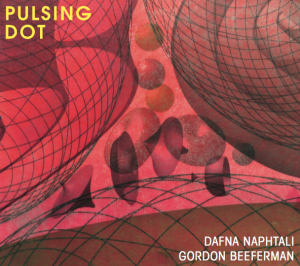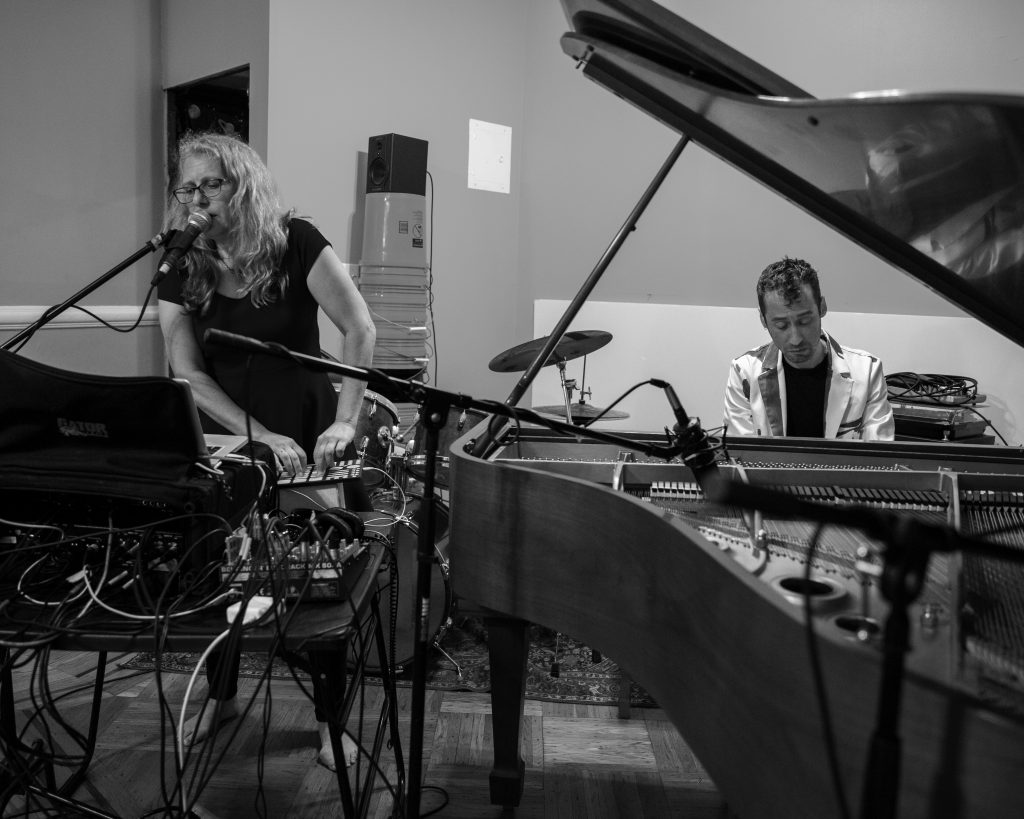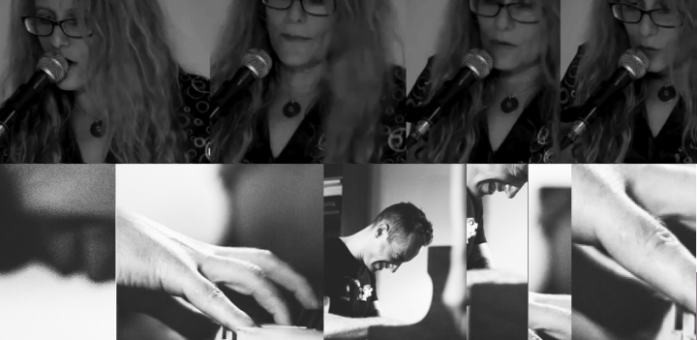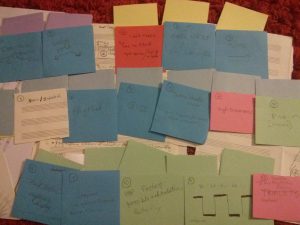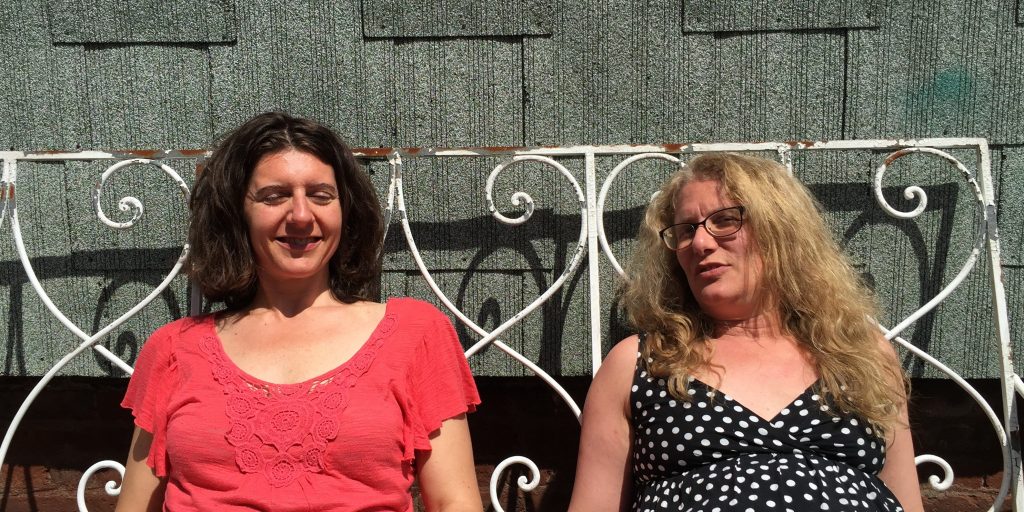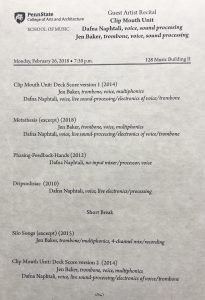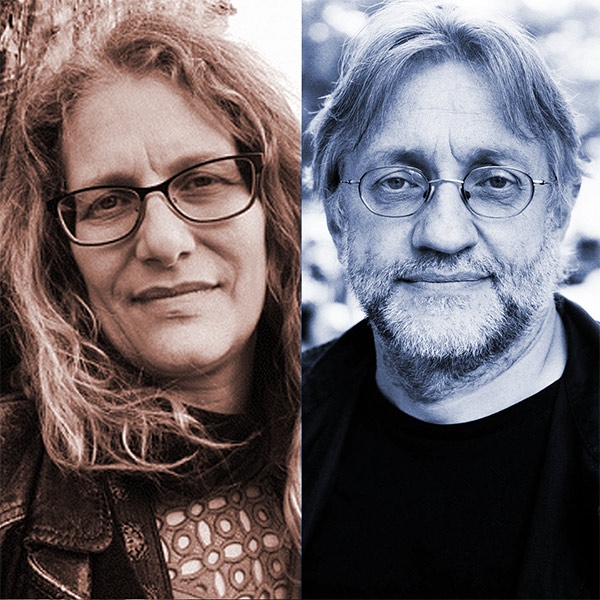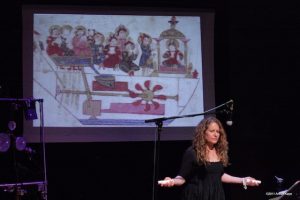Pulsing Dot, is the debut release by the duo of Gordon Beeferman (piano) and Dafna Naphtali (voice, electronics) on Clang label (Denmark) September 2017, with cover art by Julia Stoops.
In settings and improvisations for piano and voice, with kinetic sound processing, fractal rhythms, and generating polyphonic / kaleidophonic disturbances, Gordon Beeferman fleshes out protean fragments into strikingly visceral structures and landscapes that take the piano to its limit, and Dafna Naphtali augments her high energy live processing of Beeferman’s piano with extended vocal techniques/sounds/multi-modal singing and her custom take on hand and voice-activated electronics. Pulsing Dot press release.
Available here:
downloads: iTunes or Bandcamp
Preview: https://www.youtube.com/watch?v=-xXYtBu3QYM
CDs from: • Downtown Music Gallery (NYC), Squidco (by mail)
Discogs.com Page: https://www.discogs.com/Dafna-Naphtali-Gordon-Beeferman-Pulsing-Dot/release/11638914
CLANG Label: http://clang.cl/clang054_naphtali-beeferman_pulsing-dot/
“An extraordinary and stunning release…extended and multidimensional..almost of orchestral and theatrical proportions to use an inadequate comparison. The music really breathes and is full of energy, not losing itself in meaningless experimentalism and stays focused and very together.” (Vital Weekly)
“live interaction between the collaborators makes for some truly groundbreaking improvisation” (Peter Thelen, Exposé
“The well-thought-out evolution…slowly unfolds into something more like a sonic daylight.” (Chain D.L.K.)
“Naphtali & Beeferman have hit the nail on the head with this release.. a feedback loop of seamless interaction” (Sigil of Brass)
“quirky & playful”, “unpredictable, yet constantly active track that balances scuttling tension with slurred alien tribal-ness.” (Musique Machine)
watch the video: Dafna Naphtali / Gordon Beeferman live at The Firehouse, Brooklyn, NY, January 2015 https://vimeo.com/149483714






